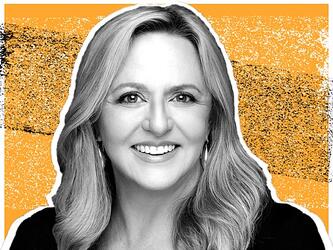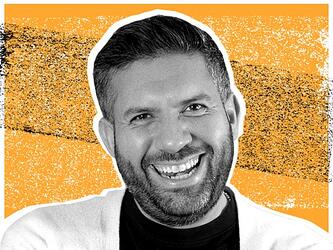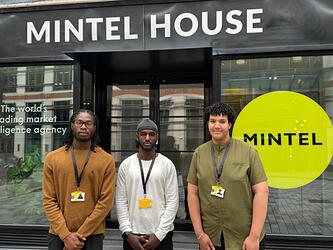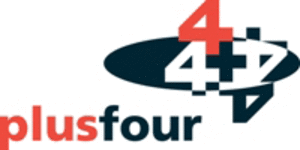Identifying insight: Designing the Armed Forces Veteran card
On 3 January 2022, I was starting my first project since coming back from my second maternity leave – a mix of trepidation tinged with excitement of getting my brain back into gear. The project was a discovery for the Office for Veterans’ Affairs (OVA), and the aim was to understand how veterans could more quickly, easily and securely prove they had served in the UK armed forces.
In the veterans’ strategy action plan ( 2022-24 ), the government committed to exploring the secure, digital verification of veterans’ status. Service leavers, post-2018, were already receiving a veteran card as part of the discharge process, and the OVA wanted to see if this could be extended to the 1.6 million veterans who left the service before that year.
I oversaw the research element of the project and, although a market researcher for more than 18 years, this was my first ‘user researcher’ gig. How different could it be? Research is research, right?
I looked at the scope – around 50 in-depth interviews, co-design sessions, an online survey, workshops, technical knowledge transfer sessions, to name but a few. Then I clocked the timeframe – nine weeks for the entire discovery phase. Was this a typo? No, this is fairly standard for digital discoveries, I was informed.
Our approach was based on a human-centred design framework:
- Heart: ‘understanding the why’, including user needs, motivations and pains
- Head: ‘mapping the what’, building a 360-degree view of the dynamics and contexts that influence behaviours and needs, envisioning a thriving service ecosystem
- Hands: ‘creating the how’, using participatory design to test and learn through real-world scenarios.
We recruited and interviewed around 25 veterans, with varying capabilities across the digital-inclusion scale, and explored their experience – from when they left the armed forces – of applying for eligible services and having to verify their identity. Simultaneously, we conducted around 25 in-depth interviews with stakeholders – including civil servants, veterans’ charities and local authorities – a complex landscape because of the number of organisations involved.
Among veterans, we discovered:
- Not all identified as a veteran. The official definition is someone who has served at least one day in the armed forces. For various reasons – for example, if they were in the reserves – the term ‘veteran’ didn’t always resonate.
- Awareness of available services (health, housing, employment support, etc) was fairly low, particularly among those who didn’t identify as a veteran.
- Verification was a manual and time-consuming process. Many veterans didn’t have any documentation, such as their discharge letter, that proved their service.
Among stakeholders, we discovered inconsistencies in processes, in terms of eligibility criteria and recording status, and subsequent frustrations and inefficiencies. The need for a flexible service, available through digital, mobile and offline channels, became clear early on. The key was to ensure that all who needed it could access it.
Envision, design, test, learn and refine
We mapped the current journeys that veterans take when verifying their identity and those of stakeholders. We created eight ‘personas’ to understand the potential users of the service and where their needs, motivations or capabilities varied.
To validate findings, we ran an online survey among veterans that achieved more than 800 completes – a breakthrough given the lack of data held on veterans in the UK. This allowed us to: validate and rank veterans’ needs; quantify the appetite for digitalisation of records; and verify and size the personas (through segmentation analysis).
We ran several co-design sessions with user groups, followed by collaboration workshops with our clients. The combination of user insights, technical expertise and stakeholder understanding informed the design of a human-centred future experience.
Daily stand-ups with the project team (including clients), sprint planning and weekly ‘show and tells’ meant everyone was on the same journey. Being part of a team working towards a common goal was essential in pushing the boundaries of what we could achieve in a limited timeframe.
The impact
On 28 January 2024, the government launched the new HM Armed Forces Veteran Card, and OVA had stayed true to our initial design. It made me so happy that veterans can now access services they need quickly. It also highlighted the importance four role as researchers in influencing and impacting service design – we are the voice of the user and can make a real difference.
Wider reflections
While jargon and ways of working may vary, user and market research complement each other hugely. This combination is exciting and full of potential. Together, we can strengthen the voice of the user, ensuring services are built around their evolving needs.
User research brings:
- Agility. While you plan activities, there is flexibility to pivot and change scope based on emerging findings. The freedom is liberating
- Transparency. You present draft ideas and work-in-progress outputs often, rather than polished end reports, facilitating collaboration and communication. It’s an open, evolving narrative
- Focus. You usually work full-time on projects. Granted, we don’t always have that luxury in traditional research, but being able to focus helps productivity
- Collaboration. Projects are often multidisciplined; you’re part of one wider team, including clients
- Completeness. You’re involved throughout; you see your insights embedded in design as it evolves and the launch of the services or products.
Market research methods add:
- Rigour: quality standards, tools and processes
- Regulation: advancing best practice in informed consent, moderation and limiting bias in the interpretation of findings. Ethics underpin everything and the MRS Code of Conduct is crucial in helping to protect research standards
- Robustness. Quantitative research skills bring opportunities for larger-scale testing and validation, from discovery to prototypes – crucial for providing weight of evidence. As Greek philosopher Heraclitus observed, ‘change is the only constant in life’. This is so true with research. I wonder if we should remove the ‘market’ and ‘user’ prefaces, and refer to ourselves simply as researchers? That’s what I’m doing, and I’m enjoying the ride.
Samantha Elliott is principal researcher at Transform

We hope you enjoyed this article.
Research Live is published by MRS.
The Market Research Society (MRS) exists to promote and protect the research sector, showcasing how research delivers impact for businesses and government.
Members of MRS enjoy many benefits including tailoured policy guidance, discounts on training and conferences, and access to member-only content.
For example, there's an archive of winning case studies from over a decade of MRS Awards.
Find out more about the benefits of joining MRS here.












0 Comments